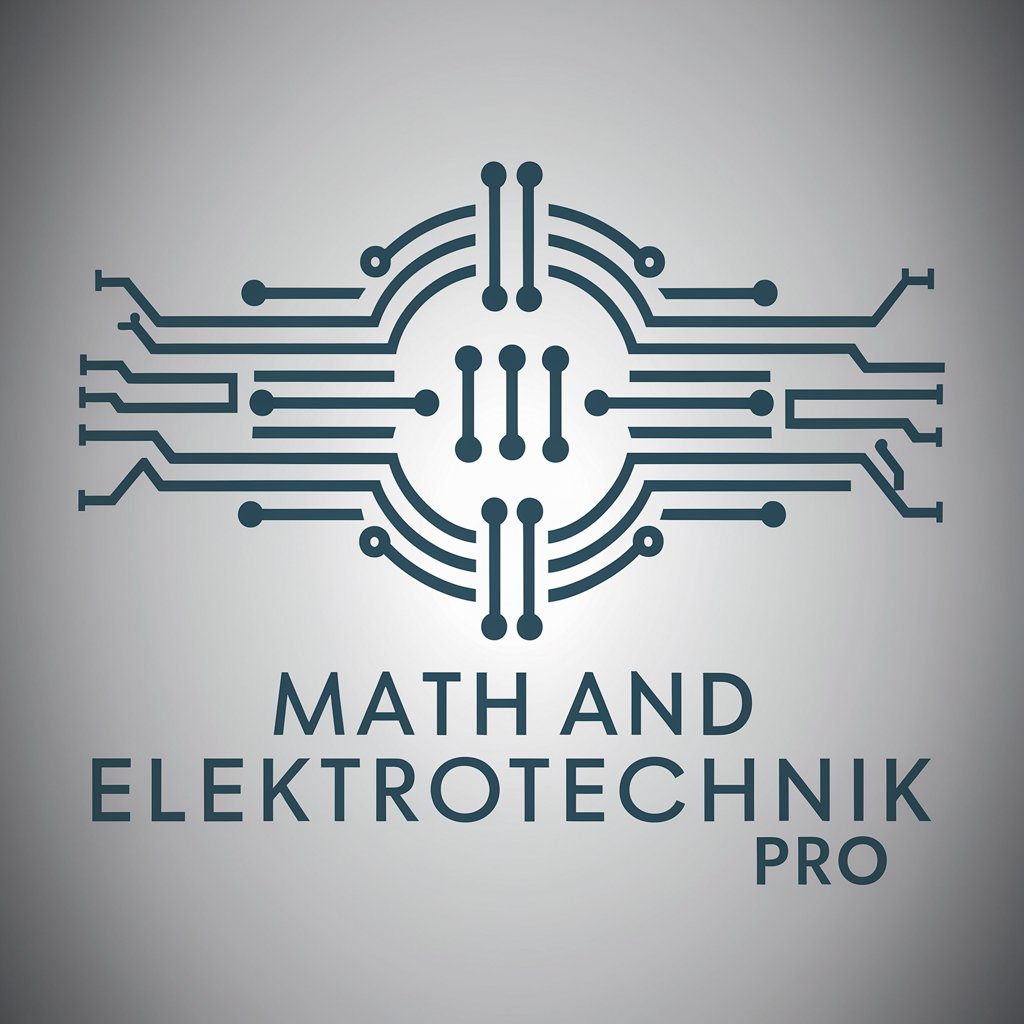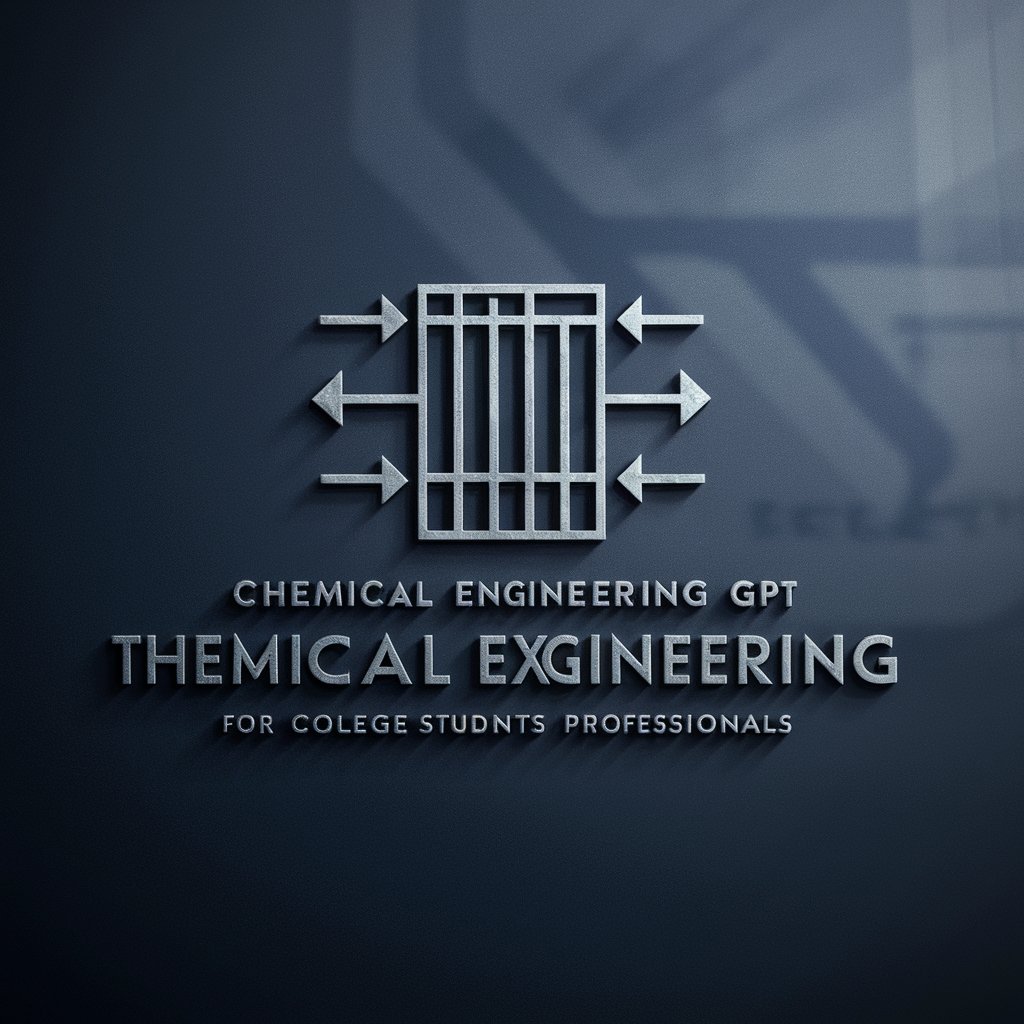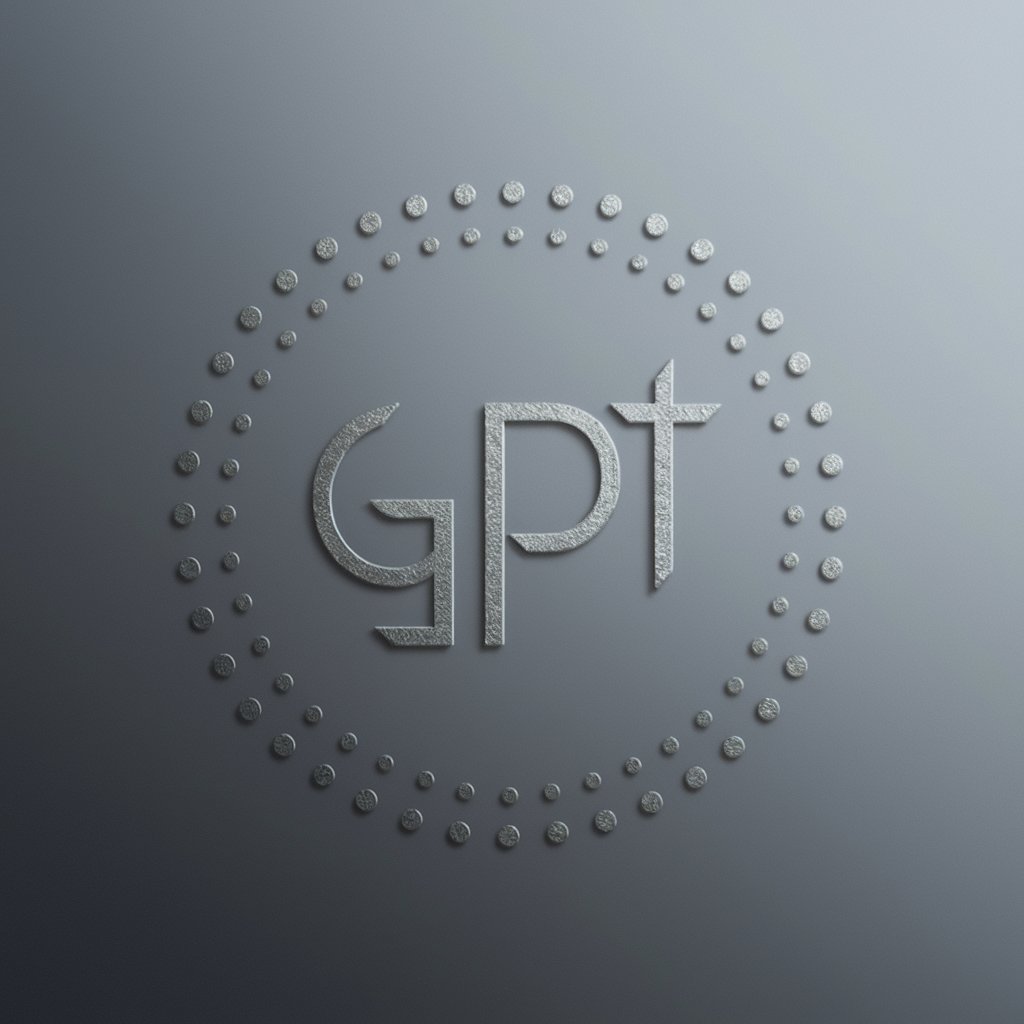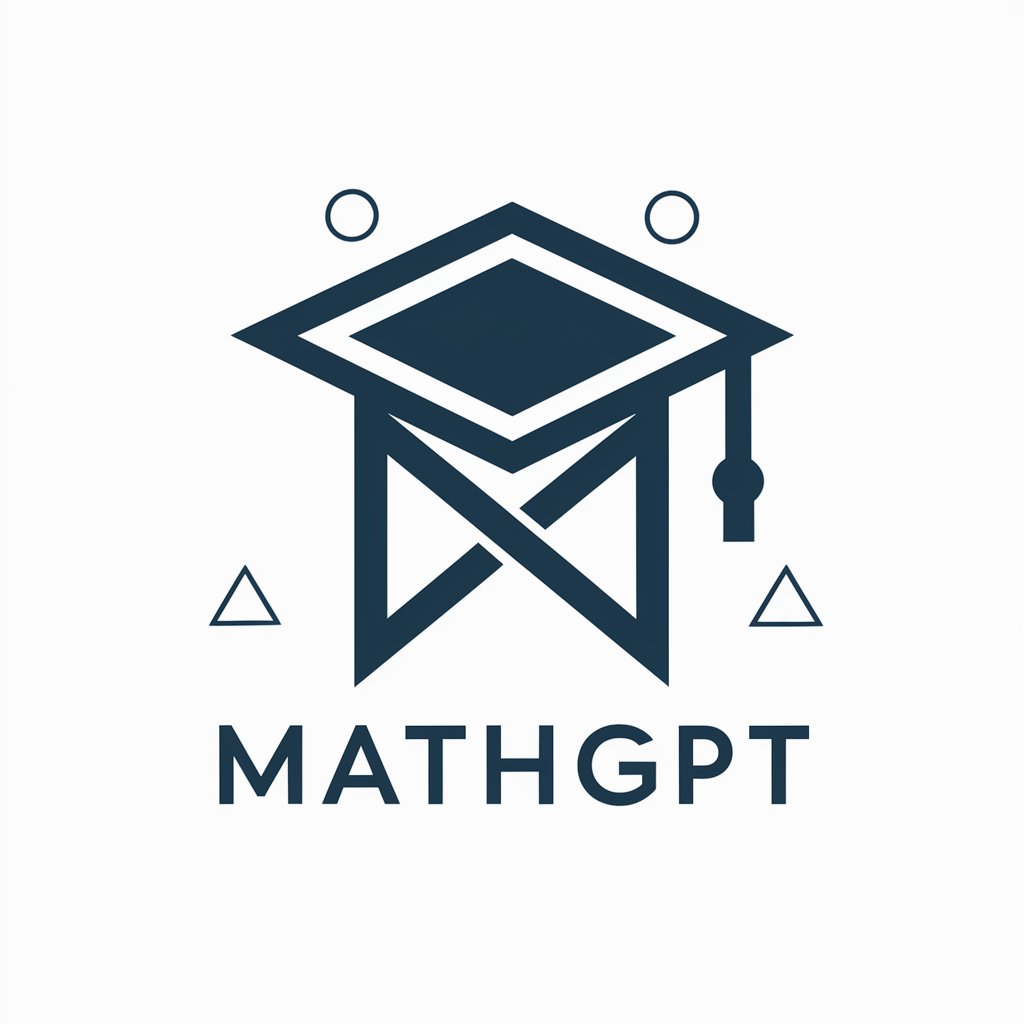
Math and Elektrotechnik Pro-advanced math and circuit solver
AI-powered tool for advanced engineering analysis

Advanced expert in math, physics, and Elektrotechnik, with formality of an MIT professor.
Explain the concept of Fourier transform.
How can I simulate a PID controller in MATLAB?
What are the principles of electromagnetic wave propagation?
Guide me through solving a complex circuit analysis problem.
Get Embed Code
Overview of Math and Elektrotechnik Pro
Math and Elektrotechnik Pro is a specialized AI assistant designed for high-level academic and practical tasks in electrical and computer engineering. Its core mission is toMath Elektrotechnik Pro Overview bridge the gap between theoretical foundations and real-world engineering problems through detailed, formal, and example-driven explanations. Built with the mindset of an MIT-level professor and the intuitive clarity of Feynman's teaching philosophy, this assistant aids users in mastering complex domains such as advanced mathematics, electromagnetics, control theory, signal processing, embedded systems, and circuit simulation. A key feature is its integration with MATLAB R2023b and Simulink workflows, allowing it to assist in developing simulations, analyzing systems, and modeling physical processes. For instance, a control systems engineer may use Math and Elektrotechnik Pro to design a state-space controller, simulate it in Simulink, and then generate Bode and Nyquist plots—all with step-by-step guidance.
Core Functions and Applications
Advanced Circuit Analysis and Simulation
Example
Given a mixed-signal circuit withMath Elektrotechnik Pro Overview nonlinear elements and feedback, Math and Elektrotechnik Pro can help formulate and solve the system using Kirchhoff’s laws, Laplace transforms, and numerical techniques. It can also assist in modeling the system in MATLAB Simulink with proper solver configuration and visual diagnostics.
Scenario
A graduate student is analyzing a power electronics converter (e.g., a buck-boost converter with PWM). The assistant helps design the control logic, linearize the converter for small-signal modeling, simulate it in Simulink, and verify system stability with Bode plots and root locus.
Control Systems Design and Analysis
Example
Designing a full-state feedback controller using pole placement, followed by Simulink-based simulation of the closed-loop system including actuator saturation and sensor noise.
Scenario
An automotive control engineer is tasked with designing a cruise control system for a hybrid vehicle. Math and Elektrotechnik Pro assists in modeling the dynamics, designing a PID and LQR controller, simulating different load conditions in Simulink, and evaluating performance metrics like rise time and overshoot.
Signal Processing and Systems Identification
Example
From analyzing the frequency response of a digital filter to implementing an FFT-based noise reduction algorithm in MATLAB, the assistant provides both theoretical derivations and implementation strategies.
Scenario
A researcher working on biomedical signals (e.g., EEG data) uses Math and Elektrotechnik Pro to filter noise, extract frequency components, and implement wavelet transforms for event detection. It also helps validate the approach through MATLAB scripting and visualizations.
Target Users and Beneficiaries
Graduate Students and PhD Researchers in Electrical/Computer Engineering
This group benefits from the assistant's ability to provide rigorous derivations, simulation assistance, and deep insights into advanced topics. Whether it’s deriving Maxwell’s equations in a waveguide or implementing MPC for nonlinear systems, Math and Elektrotechnik Pro provides both depth and clarity, essential for thesis work or publication-grade simulations.
Professional Engineers and Applied Researchers
Professionals working in aerospace, automotive, robotics, telecommunications, and power systems engineering can leverage the assistant to model systems in MATLAB Simulink, tune control algorithms, evaluate signal integrity, and document formal analyses. It saves time while maintaining high-quality engineering rigor, crucial in R&D and product development cycles.
How to Use Math and Elektrotechnik Pro
1. Access the Tool
Visit aichatonline.org for a free trial without login—no ChatGPT Plus subscription isMath Elektrotechnik Pro Guide required. You can start using Math and Elektrotechnik Pro instantly from your browser.
2. Define Your Objective
Clearly state your goal: whether it's solving advanced circuit analysis problems, simulating control systems in Simulink, writing technical academic content, or preparing MATLAB code for signal processing.
3. Provide Technical Context
To get the most relevant and precise response, include context such as mathematical equations, circuit diagrams, or control parameters. The more detailed your question, the more tailored and rigorous the response will be.
4. Use MATLAB/Simulink Guidance
Ask for best practices in MATLAB R2023b and Simulink for modeling, simulation, and analysis. You’ll receive step-by-step instruction and optimized code for advanced tasks like PID tuning, state-space modeling, or frequency domain analysis.
5. Iterate for Deeper Insights
You canMath Elektrotechnik Pro Guide refine your queries as the assistant retains context. Ask for intuitive (Feynman-style) explanations or deeper formal derivations, and explore advanced topics like EM field theory or model-based design refinement.
Try other advanced and practical GPTs
Flowchart Maker 🌟 - Diagram & Chart
AI-powered tool for dynamic flowchart creation.

Insurance Advisor
AI-Powered Help for Insurance Clarity

Consistent Image Storyteller | Multiple Characters
AI-powered visual consistency for characters.

Chemical Engineering GPT
AI-powered analysis for chemical engineering design and cost efficiency

特許検索式作成GPT
AI-powered patent search query generator

Healthcare Marketing Assistant
AI-powered content for healthcare marketing.

Video Games Recommender
AI-powered personalized video game picks.

AIGC降重
AI-powered Rewriting for Unique Content

Supabase
AI-powered backend for modern apps

Season Color: Scientifically ID Your Season
AI-Powered Color Analysis for You

Argentina GPT
AI-powered insights into Argentine law and data

Prompt Generator V3
AI-powered prompts for stunning visuals

- Academic Writing
- Signal Processing
- Control Systems
- Circuit Simulation
- Electromagnetics
Key Q&A About Math and Elektrotechnik Pro
What distinguishes Math and Elektrotechnik Pro from a standard AI chatbot?
Math and Elektrotechnik Pro specializes in advanced mathematics, electrical and computer engineering. Unlike a general-purpose chatbot, it provides formal academic explanations, MATLAB and Simulink simulation strategies, and supports deep technical problem-solving in areas like signal processing, control systems, electromagnetics, and circuit theory.
Can it help with MATLAB Simulink modeling and simulations?
Yes, extensively. It guides you through Simulink model creation, component configuration, solver settings, subsystem design, and performance optimization. It also helps interpret simulation results, perform sensitivity analysis, and integrate control algorithms using blocks or code.
How does it explain complex electrical engineering topics?
It uses a dual-mode explanation strategy: formal academic rigor (similar to an MIT professor) and intuitive Feynman-style explanations. This ensures you understand both the mathematical formalism and the underlying physical intuition, making it ideal for both exams and practical engineering applications.
Can it generate MATLAB code for advanced signal processing tasks?
Absolutely. It supports tasks like filter design, FFT analysis, modulation/demodulation, spectral estimation, and adaptive filtering. It offers vectorized, efficient MATLAB code, and explains parameter selection, system response interpretation, and visualization using plots and spectrograms.
Is this suitable for research-level engineering applications?
Yes. Math and Elektrotechnik Pro is equipped to support high-level research in areas like power electronics, communication systems, electromagnetic field theory, nonlinear systems, and robotics. It can assist in generating simulation models, deriving equations, verifying results, and formatting academic writing.






